Travel
9 United States Rivers That Are Infested With Snakes

Published:
Last Updated:

It’s a lazy Sunday afternoon on the river. You’re drifting around on your big pink flamingo float, falling asleep in the warm sun while your hand trails along through the water. Now open those sleepy eyes and notice that stick floating over there by your hand. Yeah. Not a stick, my guy. That’s a snake! Are you awake now?
The United States has 3.5 million miles of rivers and streams—so many that most Americans live within a mile of one. And we take full advantage of it: boating, fishing, tubing, or swimming, and hiking, hunting, camping, picnicking, or working along the shores. But people aren’t the only ones living their best lives on the water. Rivers provide an ideal habitat for snakes. And what’s not to like? Plenty of fish, birds, and small mammals when you have the munchies. Nice overgrown vegetation, flood debris, and rocks to hide in, make your home, and sun yourself. And, of course, the river itself provides food and water, a place to cool off, and a way to get away from predators or travel quickly downstream.

There’s a huge argument to be made that rivers have more of a problem with human infestations than snake infestations. But that’s another story. What we can say, though, is the longer the river and the more varied the habitats it runs through, the larger the number of snake species and individuals you could encounter there.
So, consulting geological and herpetological sources for each region, we’ve listed the country’s 10 longest, most snake-infested rivers. We put them in ascending order by length and have given you a sample of some of the kinds of snakes that live there—some of them quite deadly! By the way, you might have noticed we’re listing the 10 longest rivers, but the headline mentions just 9 snake-infested rivers. Why? Because one of the longest rivers in the U.S. has no snakes whatsoever. Can you guess which one?

The Ohio River runs from the Appalachian Mountains and foothills across the Midwest to empty into the Mississippi. The climate is temperate across the region, with hot summers and cold winters. Although this is one of the most heavily populated areas of the country, mountain foothills, forests, and agricultural land along the river provide abundant cover for snakes. Cincinnati, nicknamed the “Queen City,” is one of the major metropolises along its route. Interestingly, one of the common semiaquatic snake species living along the river is the queen snake, similar to a garter snake, which feeds on crayfish.

These are some of the species of snakes you might encounter in the Ohio River or on its banks:

Originating in Wyoming and “snaking” across the Pacific Northwest, the Snake River is the largest tributary of the Columbia River. It wasn’t named for the presence of snakes or the sinuous path the river takes through an arid region of the country. Instead, it got its name from the Snake Indian tribe that inhabited the region. It was once teaming with 2 million salmon until four dams were built that disrupted their spawning and drove them nearly to extinction. Small salmon were an important food source for snakes in the region. If proposals to remove one or more of the downstream dams are approved, the fish and the species that feed on them could rebound.

These are some of the slithery species you might encounter on the water or the riverbanks of the Snake River:

The Red River of the South (to distinguish it from the Red River of the North in Minnesota, the Dakotas, and Canada) forms a significant part of the border between Oklahoma and Texas before making its way to the Mississippi. As Texas is home to more snakes than any other state in the country (68 species!), the Red River is a good place to go if there just are not enough “danger noodles” in your life. Texas is home to enormous numbers of venomous copperheads and especially rattlesnakes. If you hear anyone say they saw a “puff adder” don’t get alarmed, though. Actual puff adders are a deadly North African species. What Americans call a “puff adder” is just a hognose snake – a harmless but melodramatic species that puts on a huge show to scare off predators and ultimately rolls over and plays dead if nothing else works.
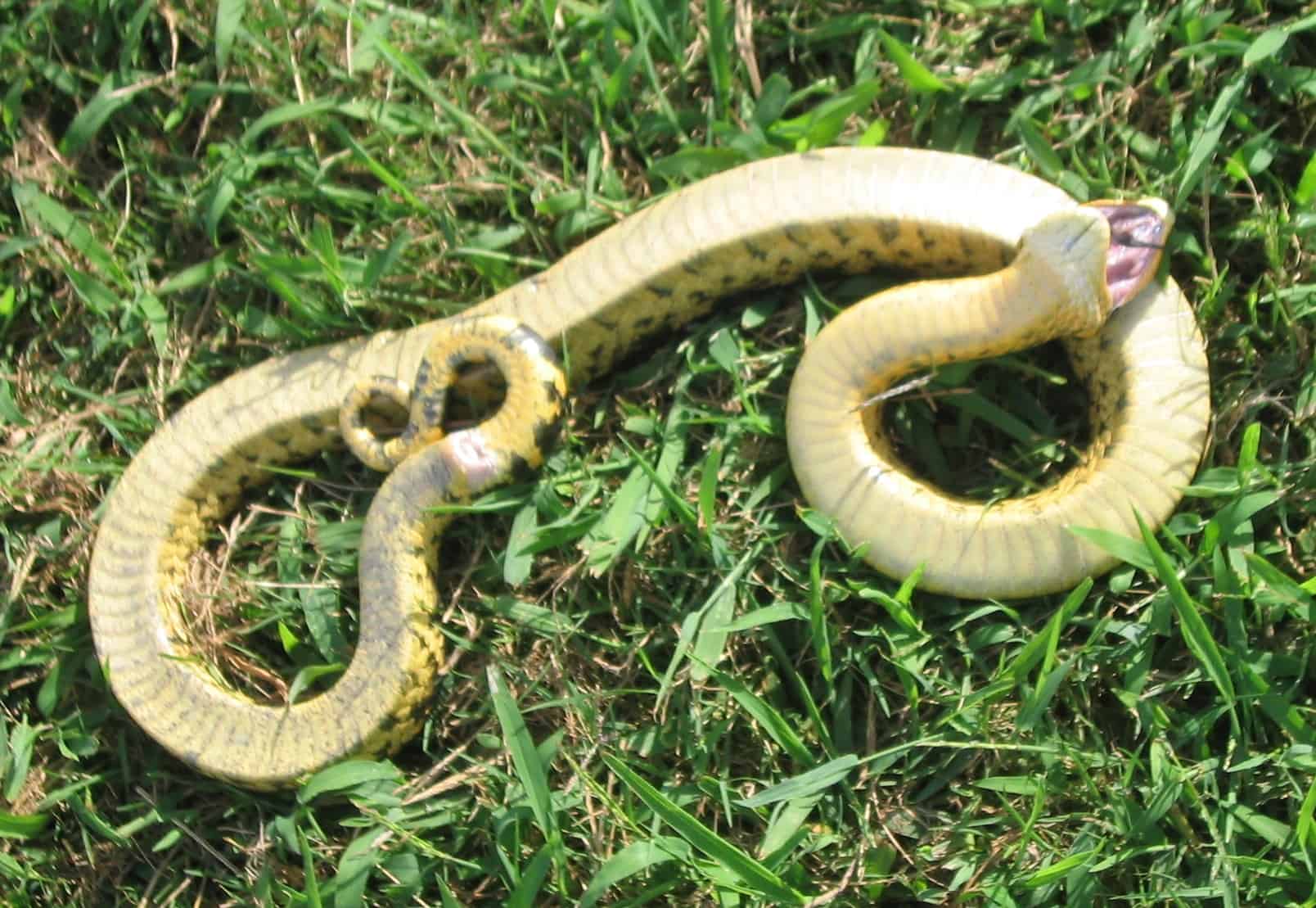
Here’s a bucket list of snakes to spot in and around the Red River of the South:

The Columbia River originates in the Canadian Rockies and works its way southwest to form the Washington-Oregon border before emptying into the Pacific. The alpine heights of the mountains are not favorable to most snakes, but for most of its length, the Columbia flows through semi-arid and Mediterranean climate zones. One species that does thrive in alpine areas of up to 10,000 feet (3,000 m) elevation is the rubber boa. As the most docile of the boa species, the rubber boa does not bite humans and is often used to help people with snake phobias become comfortable handling them.

Here are some of the varied snakes you’ll find along the Columbia River:

The Arkansas River, a major tributary to the Mississippi, has three distinct sections. In central Colorado, where it originates, it is a mountain river with fantastic whitewater rafting. Between Cañon City and Pueblo, it slows down and traverses the Great Plains as a broad, flat, slower-moving waterway. In Oklahoma and across Arkansas, it becomes even wider and is contained in a channel with flooding controlled by dams and levees. Even in the rugged part of its course, snakes are able to find sheltered pools and exposed rocks for hunting and sunning. But obviously, the slower-moving parts of the river offer many miles of riverbank teeming with amphibians, small fish, crayfish, and small animals for the diet of various species of water snakes.

A good many species of water snakes make their home in and around the Arkansas River:
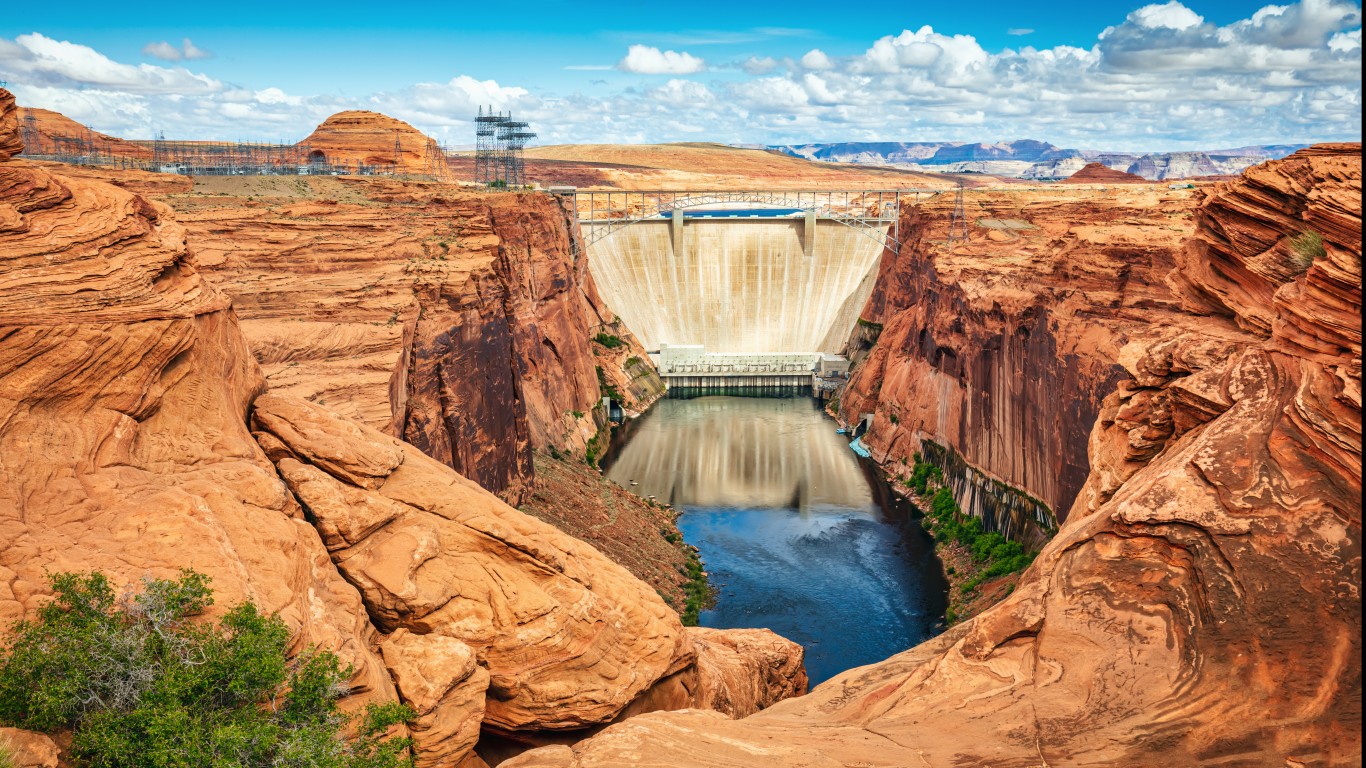
The Colorado River has figured large in the news in recent years as California and much of the rest of the Southwest have endured a decades-long drought. Serving the water needs of 7 states, it’s been called the “hardest-working river in the West.” Along with drought conditions, over-use of the water for irrigation, industry, and private homes has caused the water in Lake Powell and Lake Mead to drop to critical levels.
Generally speaking, as long as the river and its lakes do not completely dry up, snakes are able to adjust reasonably to lower water levels, as they live and hunt mainly along the banks. If it drops too quickly for vegetation to adjust, however, plants growing along the previous water level may dry up and die before new vegetation has been able to colonize the newly exposed lower banks. This can cause a deficit of food and shelter for some prey species, such as rodents or fish that live in shady shallows, and the snakes that feed on them.
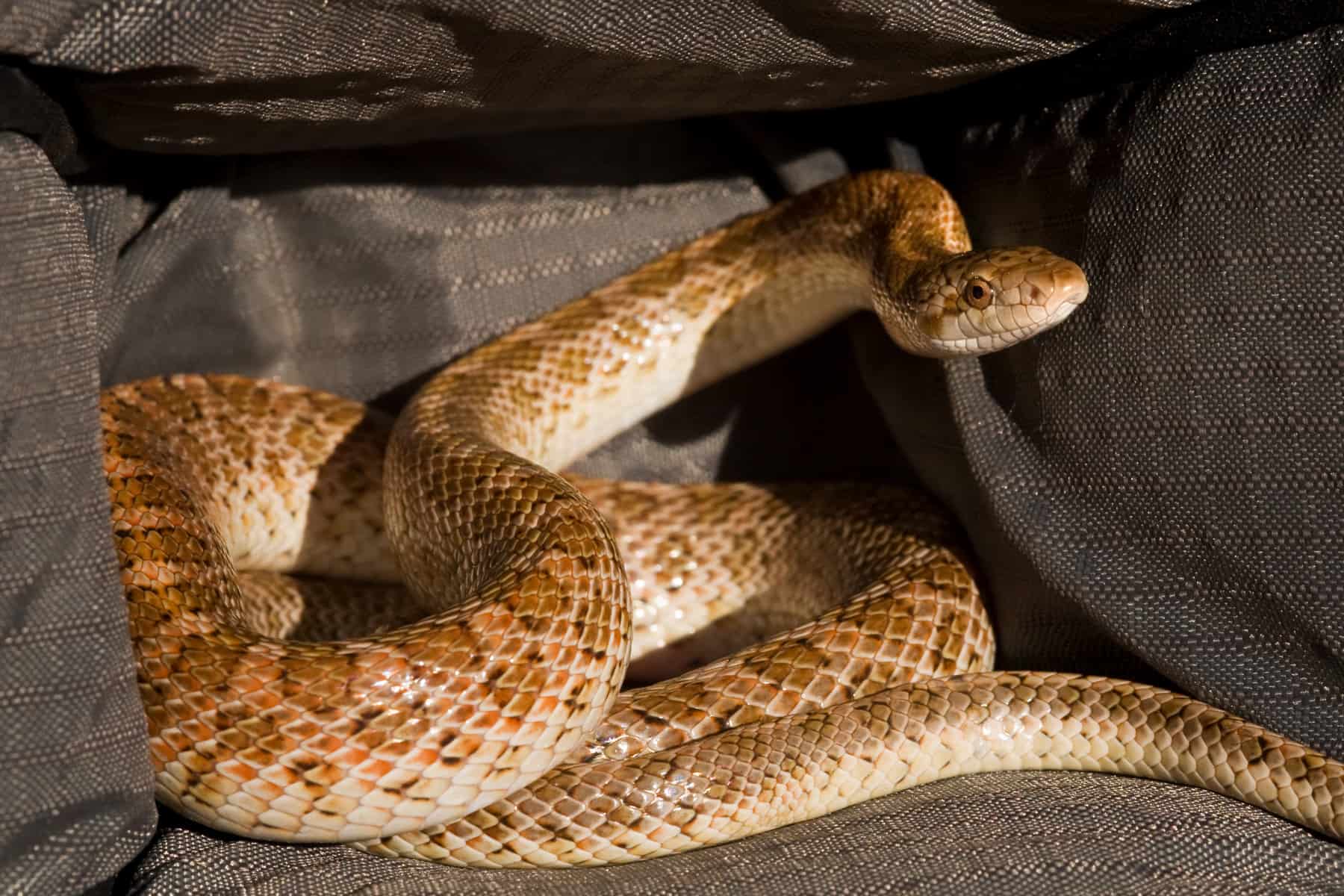
These are some of the many snake species with habitats along the Colorado River:

Originating in the Colorado Rockies, the Rio Grande flows southeast to the Gulf of Mexico, forming the border between Texas and Mexico along most of its length. The river runs through regions of mainly arid and subtropical climate types. Without the river, there would surely be far fewer snake species in the region, but with it, you’ll encounter species endemic to dry or even desert conditions as well as those that thrive in and near water.

Here are some of the many species that call the Rio Grande home:
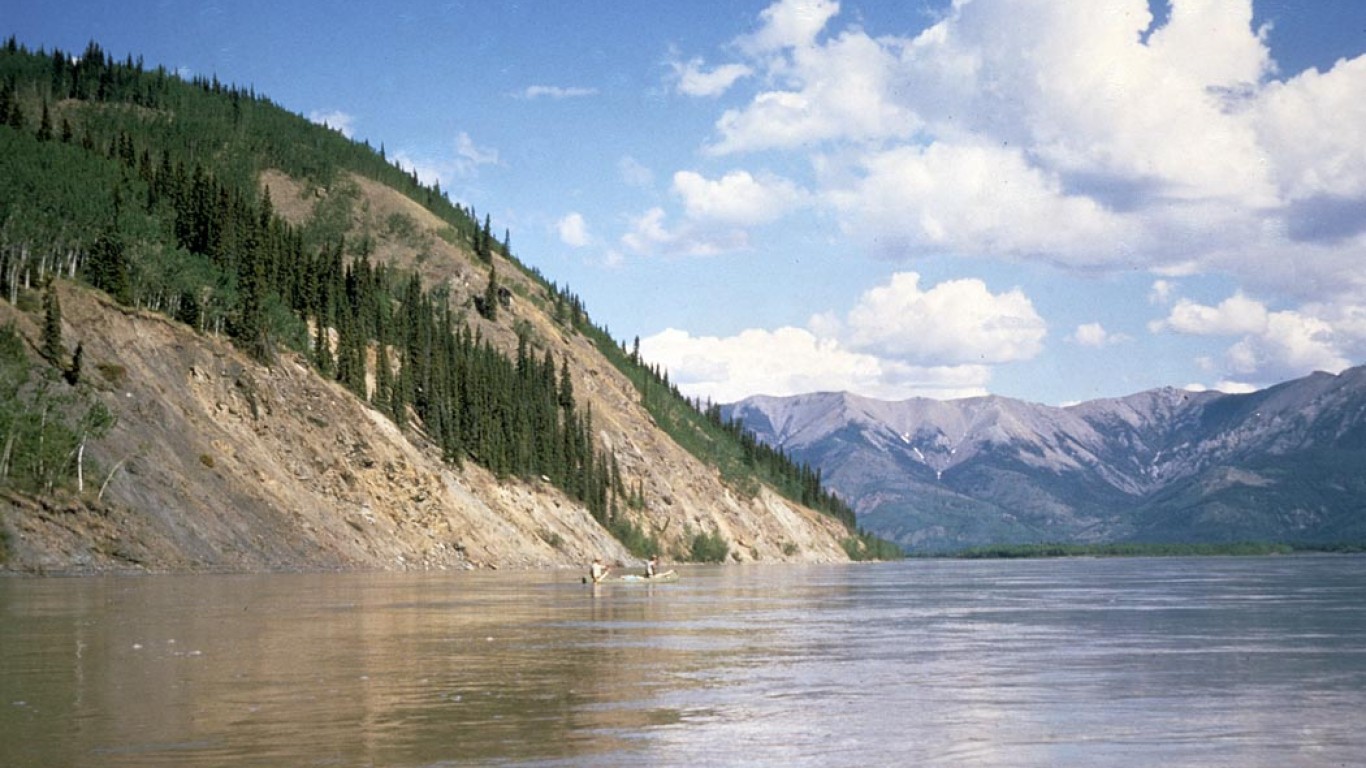
As promised, we included one massively long American river in this list with no snakes to give a welcome reprieve to those who fear them. In fact, there are no snakes or reptiles of any sort in the whole state of Alaska, aside from rarely-sighted sea turtles. The reason is pretty obvious. Reptiles use their external environment to regulate their body heat: sunning on a warm rock or retreating to the shade as necessary. And Alaska, with its continental and arctic climate conditions, is just too dang cold for cold-blooded animals. Of course, that means it is too cold for most people, too!

The Mississippi River is so enormous that its watershed drains parts of 32 U.S. states and two of Canada’s provinces. In the northern part of its journey, it runs through a humid continental climate with cold winters and warm summers. In the south, the climate is humid subtropical—a much more ideal habitat for snakes.
Unfortunately, it is also one of the most polluted rivers in the world. Running through the agricultural heartland of the continent, the river absorbs runoff from chemical fertilizers used in agriculture and lawn care. The nutrients cause algae blooms that use up the oxygen in the water and kill off aquatic life, disrupting the food chain for snakes and other predators.
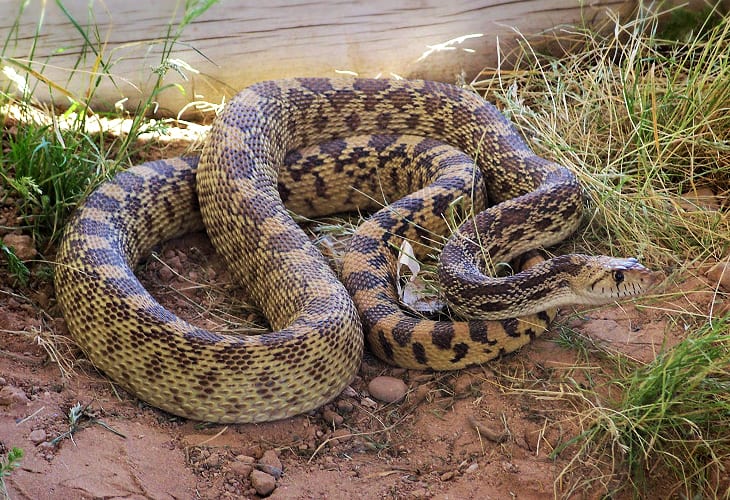
Here’s a sample of some of the most plentiful Mississippi River snakes:

You might be surprised to discover that the Missouri River is the longest in the United States, just one mile longer than the Mississippi! No doubt, it will fall behind one day as the Mississippi River Delta slowly builds up silt and extends further into the Gulf of Mexico. Running through the lightly-populated Plains States and Upper Midwest, the Missouri is home to a multitude of water snakes, including the deadly water moccasin or cottonmouth. This is one of only four venomous snake species in the United States, the others being the coral snake, rattlesnake, and copperhead.

This is a representative sample of some of the snake species in and around the vast Missouri River.

The best way to survive a snake encounter is not to have one. Mostly, snakes try to escape from people, but when you mess around in places with a lot of concealing underbrush, deadwood, or rocks, you raise your chances of surprising one and being surprised by one. Snakes can strike anywhere from 1/3 to 1/2 of their body length, so for a long snake, that could be a yard or more of striking distance. You won’t always have any warning you’re about to be bitten, even from a rattlesnake, as they do not always shake their rattles.
If avoidance isn’t an option, then dress protectively with long pants and boots. And of course, don’t try to copy the snake wranglers you’ve seen on tv. There’s no faster way to be bitten than to pick up a snake deliberately.
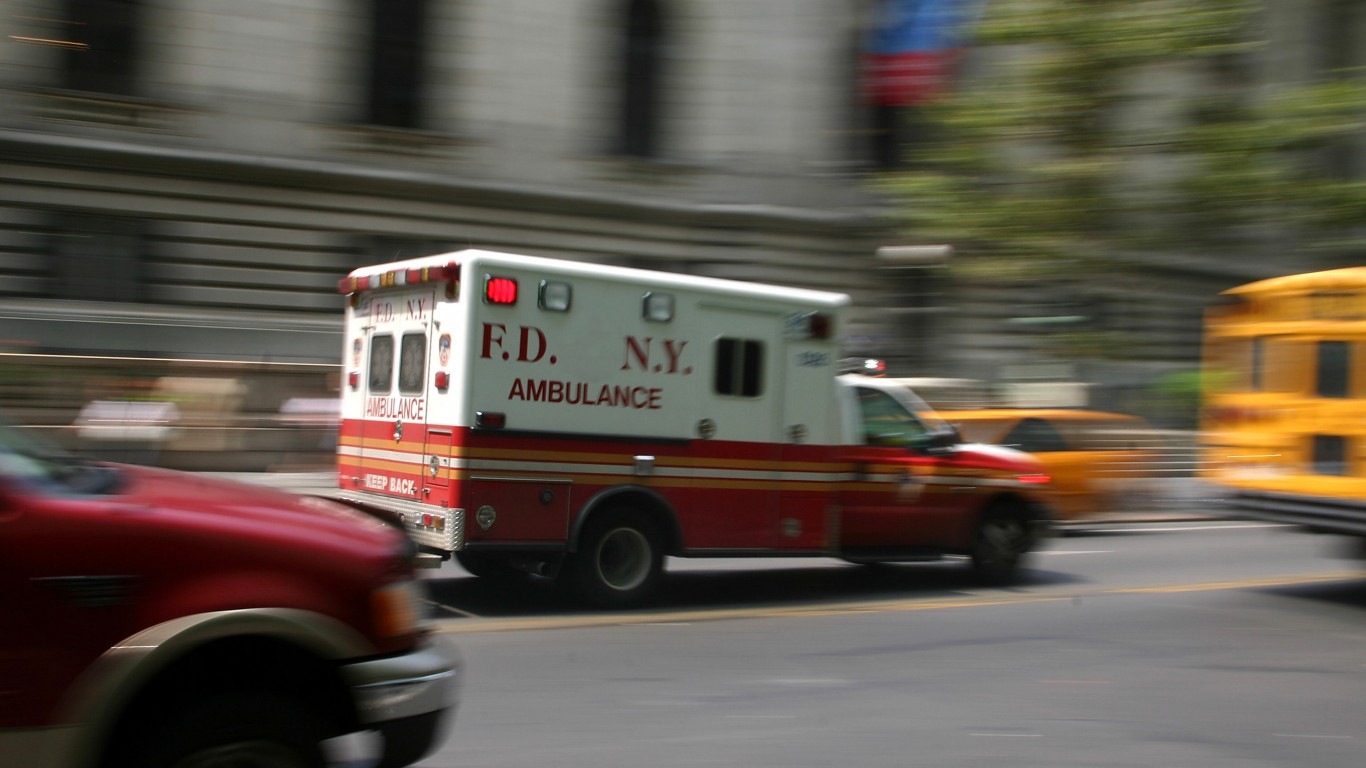
If you do get bitten, try to notice any identifying details or snap a picture of it, if possible, to help medical staff determine whether it is a venomous species. Venomous or not, seek medical attention. Even a non-venomous snake may bite to defend itself, injecting bacteria into the wound they create that can lead to an infection. You may need a preventive course of antibiotics.
Being bitten by a venomous North American snake species does not mean instant death. In fact, venomous snakes bite about 8,000 people in the U.S. a year, but only 10 or so die. So if a rattlesnake gets you, there’s a 99.9% chance you’ll survive. It’s 10 times more likely you’ll die in a car crash, so the person driving you to the hospital is quite a bit more dangerous to you than the snake!

The U.S. Forest Service recommends these emergency steps if you’re bitten by a venomous snake:
Now that you’re fully armed with snake knowledge, go back to enjoying your flamingo float on the river. But maybe keep your hand out of the water . . . just in case.
Start by taking a quick retirement quiz from SmartAsset that will match you with up to 3 financial advisors that serve your area and beyond in 5 minutes, or less.
Each advisor has been vetted by SmartAsset and is held to a fiduciary standard to act in your best interests.
Here’s how it works:
1. Answer SmartAsset advisor match quiz
2. Review your pre-screened matches at your leisure. Check out the advisors’ profiles.
3. Speak with advisors at no cost to you. Have an introductory call on the phone or introduction in person and choose whom to work with in the future
Thank you for reading! Have some feedback for us?
Contact the 24/7 Wall St. editorial team.